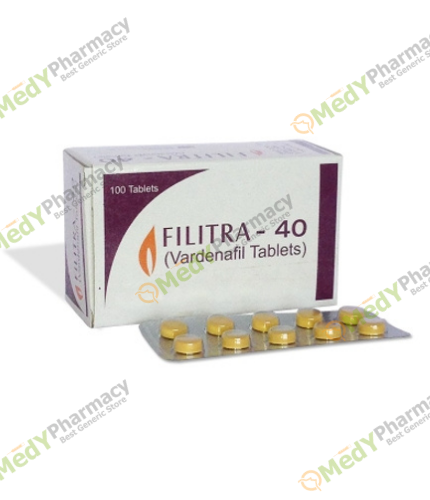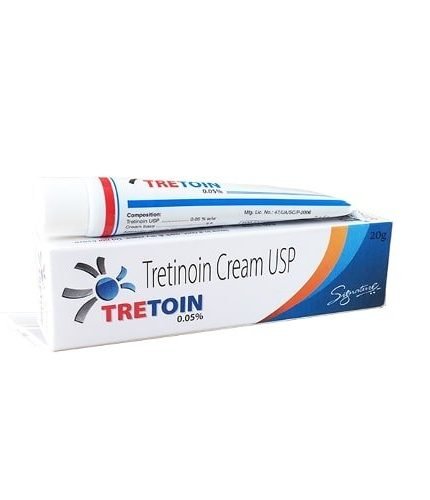Introduction:
There is a significant problem with this management. We cannot overlook discussing diabetes knowing how damaging it may be if somebody acquires it.
The body can suffer greatly from high blood sugar levels. It is really important to find natural ways to aid with this.
This may help you get your desired results. This will enable you to manage diabetes and elevated blood sugar levels naturally. This can assist you in managing the possible symptoms and adverse consequences that diabetes may produce.
We need to discuss whether these are capable of fulfilling this task. We need to know where to find it if it does play a part. To maximize the benefits of omega-6 fatty acids, we should also talk about other natural diabetes management strategies.
The body contains them in every part. They support every cell’s operation. An excess of omega-6 fatty acids, however, can alter cell responses and negatively impact heart and blood vessel cells.
Although there isn’t any solid scientific proof to back up these claims, people utilize omega-6 fatty acids for a variety of ailments, including diabetes, cancer, high cholesterol, heart disease, and child development.
There are several kinds of acids, including GLA. Also, several supplements, such as black currant, borage, and evening primrose, are utilized as sources of omega-6 fatty acids. See these subjects in separate lists.
Omega-6 fatty acids: Is it beneficial or harmful?
These are thought to be vital for optimal health; they maintain bone health, control metabolism, and play a significant role in skin and hair growth in addition to supporting brain function.
However, can only be obtained from specific foods, such as soybean oil, sunflower oil, corn oil, and some nuts and seeds, because the body is unable to generate them.
Since they’ve been connected to heart disease and elevated inflammation, they should only account for 5–10% of our daily calorie consumption.
Although studies have looked at how omega-6 affects heart health, nothing is known about how it affects type 2 diabetes risk.
The authors of the study state that there are “potential limitations of publication bias and inadequate power to assess interactions by demographic, medical, or genetic characteristics” because only a small number of prospective studies have examined associations between linoleic acid or arachidonic acid biomarkers and diabetes.
The possible effects of Omega-6 Fatty Acids (PUFAs), such as linoleic acid and its metabolite arachidonic acid, on these are therefore yet unknown, despite their significant clinical, scientific, and public health significance, they continue.
What Are Fatty Acids That Are Omega-3?
These are polyunsaturated fats, which are lipids that your body is unable to produce.
Their chemical structure is referred to as “polyunsaturated” since “poly” means multiple and “unsaturated” denotes double bonds. When combined, they indicate the high number of double bonds seen in omega-3 fatty acids.
These facts are known as “essential fats,” which means that you must obtain them from your diet because the human body is unable to create them.
Consuming two or more servings of fish per week, especially oily fish, which is high in omega-3 fatty acids.
This comes in a wide variety of forms, each distinguished by its size and chemical makeup.
Eicosapentaenoic acid: The primary role of this 20-carbon fatty acid is to generate eicosanoids, which are compounds that aid in the reduction of inflammation. Additionally, EPA may lessen depressive symptoms.
About 8% of the weight of the brain is made up of docosahexaenoic acid (DHA), a 22-carbon fatty acid that is important for brain growth and function.
Alpha-linolenic acid: Although the conversion process is not extremely effective, this 18-carbon fatty acid may be transformed into EPA and DHA. The immune system, neurological system, and heart all seem to benefit from ALA.
A vital component of human cell membranes is these. They also serve other crucial purposes,
Strengthening the heart. This may be useful in controlling blood pressure, triglycerides, and cholesterol.
Encouraging mental wellness. Those who are at risk for depression, Parkinson’s disease, and psychosis may benefit from taking omega-3 supplements. More study is necessary, though.
Decreasing waist size and weight. More research is required to determine whether omega-3 fats can assist people in controlling their weight and waist circumference.
Reduction of hepatic fat. This may help reduce liver fat, according to preliminary studies.
Helping the development of a baby’s brain. This helps a fetus’s brain grow.
Battling inflammation. The inflammation that comes with some chronic illnesses may be lessened with the aid of omega-3 fats.
Rheumatoid arthritis, diabetes, atherosclerosis, and heart failure are among the chronic illnesses that may be exacerbated by a low consumption of omega-3 fatty acids relative to omega-6s.
What Are The Omega-6 Fatty Acids?
The Omega-6 Fatty Acids in question are polyunsaturated. These must be obtained from food since they are also necessary.
Their primary utility is energy. Linoleic acid is the most prevalent of them, and the body may transform it into longer omega-6 fats like arachidonic acid.
AA also creates eicosanoids, much like EPA. AA does, however, create more pro-inflammatory eicosanoids.
Pro-inflammatory eicosanoids are important for the immune system. The body may be more susceptible to inflammation and inflammatory diseases if it generates an excessive amount of them.
Although research indicates that those who consume a normal Western diet may ingest a ratio of 15-to-1 to almost 17-to-1, a healthy ratio of omega-6 to omega-3 fatty acids seems to be between 1-to-1 and 4-to-1.
Increases Insulin Sensitivity
You will benefit from having Omega 6s in this regard. It improves insulin sensitivity. It increases its secretion, which aids in the control of diabetes.
It breaks down the body’s stored glycogen. It lowers its level and makes sure it doesn’t get too much in the blood. You can prevent diabetes by producing enough insulin.
It assists you in managing elevated blood sugar levels. Eating foods high in this can help you with this. By doing this, you can be confident that you will get the desired outcomes.
Regulation of Blood Sugar
The key to managing diabetes is blood sugar management. Problems arise from elevated blood sugar levels. But any device that can control it is important. This is an advantage of Omega 6s.
Consuming foods high in this can help control blood sugar levels. Controlling blood sugar levels is one of the most important aspects of managing diabetes. Gaining control of this lowers the risk of type 2 diabetes.
This is helpful because it prevents insulin resistance from developing. It guarantees that any extra sugar in the blood may be appropriately removed. It avoids diabetes’s severe hazards, which can lead to a host of additional issues.
Does Omega-6 Fatty Acids Have Any Advantages?
There have been some positive results in addressing chronic illness symptoms.
Some oils contain gamma-linolenic acid, an omega-6 fatty acid, including:
- Oil of evening primrose
- Borage Oil
- Dihomo-gamma-linolenic acid is another fatty acid that is produced when a large portion of it is ingested.
There may be some health advantages to GLA and DGLA, according to research. For instance, GLA could lessen inflammatory disease symptoms. More study is necessary, though.
Conjugated linoleic acid (CLA), another type of omega-6, may help lower human body fat, according to the findings of one study’s authors.
These nutrients are vital for heart health. Many foods, especially vegetable oils, seeds, and nuts, contain these heart-healthy fats. Since our bodies are unable to produce omega-6s, we must obtain them from our food. However, most of us receive more than enough.
Whether consuming a lot of omega-6 might be too beneficial has been questioned by researchers. According to studies, the most prevalent type of omega-6, linolenic acid, is changed by our bodies into a substance that might increase blood vessel tightness and inflammation.
However, a new study shows that this impact is small and is more likely to be linked to a diet poor in omega-3s, which are the other necessary Omega-6 Fatty Acids that we acquire from foods like fish. Compared to omega-6s, most of us receive 14–25 times more fatty acids.
This does not imply that you should reduce your intake of omega-6s; rather, the greatest health advantages come from better balancing them with omega-3s.
Why Omega-6 Fatty Acids Are Necessary
This helps all of the body’s cells work properly. The majority of us receive more than enough of them from our meals, even if supplements are available. Experts recommend consuming 5–10% of your daily caloric intake from omega-6 fats, or an average of 11–22.
- Heart Assistance
Research indicates a connection between a lower incidence of heart attacks and other cardiac conditions and increased consumption of linoleic acid, the most prevalent omega-6. According to some studies, this may reduce cholesterol, preventing clots and cardiac issues from forming in your blood vessels.
- Cells in good health
These are necessary to keep cells’ activities and structures in good condition. They reduce cell damage that might result in health issues or chronic illness by assisting Omega-6 Fatty Acids in maintaining proper cell function.
- Possible Inflammatory-Reduction Benefits
According to research, our bodies convert linoleic acid into gamma-linoleic acid (GLA), a substance that may help reduce inflammation. Over time, inflammation can lead to chronic inflammatory disorders like arthritis, even though it is a normal physiological reaction.
This impact and its potential to alleviate inflammation are still being investigated by scientists. Any connection, however, depends on eating a healthy diet. Vitamins C, B3, and B6 as well as minerals like magnesium and zinc are necessary for our systems to transform omega-6s into their anti-inflammatory forms.
Supports Inflammation Management
Individuals with diabetes and fatty acid disorders must deal with several health issues. Among them, there are still dangers of inflammation. Certain areas of the body may enlarge as a result. Occasionally, it can lead to unpleasant circumstances. It may potentially harm the body’s essential organs and impair their ability to function.
You may consume foods high in Omega-6 Fatty Acids to help manage all of this. They are capable of controlling this.
It helps to manage them, according to recent studies. It helps manage these kinds of problems when used in moderation. Undoubtedly, this lessens the effects of diabetes. It not only manages diabetes at its root cause, but it also lessens its symptoms.
Foods with Omega-6 Fatty Acids
The majority of processed meals prepared with vegetable oils, such as packaged snacks, frozen pizza, and fast food, contain omega-6 fatty acids. For many of us, the abundance of these substances in the typical diet leads to imbalances between omega-6 and omega-3.
High amounts of saturated fats are typically found in processed meals. Therefore, the source is important even if omega-6s are necessary for optimal health. Reduce the amount of processed foods you eat and try these healthier, omega-6-rich substitutes:
- Safflower Oil
Omega-6s, such as oleic acid, which have anti-inflammatory and blood sugar-regulating qualities, are also present.
- Walnuts
Walnuts, which contain 10.8 grams per ounce, or around 14 halves, are a great source of omega-6s. Additionally, they include omega-3s, which support the maintenance of a healthy fatty acid balance in your diet.
- Seeds from sunflowers
Sunflower seeds are an excellent source of protein and a variety of other minerals, including vitamin E and magnesium. An ounce of them has 9.3 grams of omega-6s. To incorporate flaxseeds or chia seeds into your diet, sprinkle them on cereal, salad, or spaghetti.
- Canola Oil
Omega-6 is more abundant in other vegetable oils, such as soybean, sunflower, and grapeseed, but canola oil offers a more comprehensive supply of important Omega-6 Fatty Acids. It contains 0.13 grams of omega-3 fatty acids per tablespoon in addition to 2.66 grams of omega-6. Most cooking oils may be substituted with canola oil.
- The tofu
Three grams of omega-6s are found in half a cup of tofu. Tofu is a fantastic meat substitute for those following a plant-based diet because it is also strong in protein. Yet, vegetarians should make sure they’re receiving enough of some crucial omega-3s, which are best found in fish, to maintain a healthy fatty acid balance.
- Eggs
About 1.8 grams of omega-6s are included in one big egg, although the yolk, not the whites, has the majority of this amount. According to a study, the yolk has little impact on your blood cholesterol levels despite having a high cholesterol content. A daily egg may be a fantastic source of protein and essential elements including vitamins, minerals, and Omega-6 Fatty Acids, unless your doctor indicates otherwise.
- Mayonnaise
Due to its high saturated fat content, mayonnaise should be used sparingly. However, 5.4 grams of omega-6 and some omega-3 are present in only one tablespoon. Add canned tuna, which is a great source of Omega-6 Fatty Acids, to it to help you fulfill your daily fatty acid needs.
- Nuts and seeds
Almonds and other nuts are heart-healthy because of their high fatty acid content. About 24 almonds, or 3.7 grams of omega-6s, are included in one ounce. However, nuts are high in calories, so limit your intake to prevent unintended weight loss.
Is Also Going To Help Lower Cholesterol Levels
This is nearly always associated with high cholesterol. The levels of diabetes increase with severity. Of course, you also receive this advantage with Omega 6s.
It aids with cholesterol regulation. This does significantly affect play. It lowers your cardiac risks by managing this. Heart-healthy behaviors are important.
Among the most vital organs is our heart. We must not allow it to falter. Therefore, anything that contributes to enhancing its performance is significant.
Diabetes and other conditions like it can seriously impair our heart health. It can be exacerbated by problems like cholesterol. Omega-6 Fatty Acids, on the other hand, provide an answer. It resolves this issue you are having. By doing this, the negative effects of diabetes on our bodies are lessened.
How Omega-6 Fatty Acids Relate To Diabetes
They stimulate growth and development, support brain function, and promote skin health, among other vital bodily functions. Ongoing studies and discussions, however, center on their effects on health, particularly diabetes.
- Fatty Acids Omega-6 and Inflammation:
The difference between pro- and anti-inflammatory the metabolization of omega-6 fatty acids produces compounds known as eicosanoids, which, depending on the kind of omega-6 involved, can either have anti-inflammatory or pro-inflammatory properties. Common like arachidonic acid tend to increase inflammation when they are converted into pro-inflammatory eicosanoids.
Chronic inflammation is thought to play a role in the development of diabetes. According to some studies, low-grade inflammation may be exacerbated by an imbalance in the ratio of omega-6 to omega-3 fatty acids, which might exacerbate insulin resistance, a major problem in diabetes. However, when taken in moderation, especially when paired with omega-3 fatty acids, some research suggests that omega-6 fatty acids may help lower inflammation.
- Impact on Sensitivity to Insulin:
Conflicting Evidence: There is conflicting evidence about the impact of omega-6 fatty acids on insulin sensitivity. According to certain research, omega-6 fatty acids may enhance insulin sensitivity by lowering inflammation, which is important for the treatment of diabetes. Other research, however, indicates that consuming a lot of omega-6 without enough omega-3 might exacerbate insulin resistance, a defining feature of diabetes.
Overall dietary patterns, including the proportion of omega-6 to omega-3 fats and the general quality of the diet, may influence the possible positive benefits of omega-6.
- Omega-6 and Type 1 Diabetes:
Autoimmune Disease Insulin-producing cells in the pancreas are attacked by the body’s immune system in type 1 diabetes. Little is known about the impact of omega-6 fatty acids on Type 1 diabetes, and the findings are not entirely conclusive. While some research indicates that omega-6 may offer some protection against autoimmune disorders, other studies find no discernible benefit.
- Nutritional Aspects:
Finding a Balance Is Essential There is currently agreement among nutrition experts that a diet that balances omega-3 and omega-6 fatty acids is crucial. Because of the average Western diet’s high omega-6 content and low omega-3 content, inflammation and metabolic issues, such as insulin resistance, may worsen. Although this ratio should ideally be closer to 1:1, the typical consumption is frequently more in line with 15:1 or even 20:1, with a significant bias toward omega-6s.
Along with omega-6 sources, consuming foods high in omega-6 fatty acids, such as walnuts, flaxseeds, and fatty fish, may help balance the fatty acids and promote improved insulin sensitivity and decreased inflammation.
- Real-World Diabetes Implications:
Moderation of Omega-6 Intake: Moderation and balance are key for those with diabetes or those at risk. This by themselves might not be able to aid or hurt insulin resistance, but they shouldn’t be consumed in excess. Blood sugar control and inflammation reduction may benefit from ensuring a sufficient intake of omega-3 to balance omega-6.
The Whole Diet Method: The quality of the food as a whole should be taken into account rather than only omega-6 fats. Instead of concentrating only on one type of fat, diabetes treatment may benefit more from a diet full of complete foods, such as an abundance of fruits, vegetables, fiber, and healthy fats, as well as from frequent exercise.
Does Taking An Omega-6 Fatty Acids Supplement Make Sense?
Typically, combined omega-6 supplements supply each of these Omega-6 Fatty Acids in appropriate amounts.
When the ratio of omega-6 to omega-3 is less than 4 to 1, these oils can help you improve your fatty acid balance and boost your intake of omega-3 fats.
However the body makes omega-9, and most individuals already receive enough omega-6 from their diet. Because of this, most people don’t need to use these fat supplements.
It’s preferable to concentrate on obtaining a healthy ratio of omega 6 through your diet.
This may be achieved by using olive oil in salad dressings and cooking, as well as by consuming at least two servings of oily fish per week.
Consuming less fried meals cooked in refined vegetable oils and other vegetable oils can also help you minimize your intake of omega-6.
It may be more beneficial for people who do not consume enough omega-3 from their food to take an omega-3 supplement instead of a combination omega-3-6-9 supplement.
It Aids in the Management of Diabetes Risk Factors
This is one of those conditions that occurs for a cause. These risk factors are essential to your battle with this illness. Controlling these elements is a requirement. Omega 6s will assist you in doing so.
Its advantages have been deemed problematic by several research. Indeed, Omega-6 Fatty Acids aid in reducing this type of risk factor. It aids in getting rid of all the things that lead to diabetes. When the time comes, it guarantees that these risk factors won’t cause diabetes.
By removing things like poor metabolic health, it does this. Maintaining improved metabolic health is essential to preventing problems that arise from its inadequate operation. Undoubtedly, this is one of them.
Enhancing metabolic health and lowering the risk of fatty acids and diabetes are two benefits of omega-6 fatty acids. This will help someone prevent diabetes from the start if taken at the appropriate time.
How to pick a 6 omega supplement
When polyunsaturated Omega-6 Fatty Acids are exposed to heat and light, they readily oxidize, much like other oils.
This indicates that the oil was extracted using a low amount of heat, reducing the possibility of oxidation damaging the fatty acid molecules.
Choose a supplement that has an antioxidant, like vitamin E, to make sure you’re not ingesting oxidized supplements.
Choose a supplement that has the largest amount of omega-3, ideally more than 0.3 grams per serving.
Additionally, stay away from flaxseed oil and go for a supplement that contains fish or algae oil instead, as EPA and DHA are more beneficial to health than ALA.
Safety Measures of Omega-6 Fatty Acids
Only a qualified healthcare professional should supervise the use of dietary supplements due to the possibility of adverse effects and drug interactions.
Due to complaints of these supplements causing seizures, if you have a seizure problem, DO NOT take omega-6 fatty acids. There have been some cases of seizures in EPO users. Some of these seizures happened to patients who had previously had seizures or to people who were taking EPO and anesthetics together. Individuals who want to have anesthesia-requiring surgery should cease taking EPO two weeks in advance.
Don’t take more than 3,000 mg of GLA daily. The amount of inflammation may rise at that point.
The occasional headache, nausea, diarrhea, and stomach pain are all possible side effects of EPO. GLA has been shown in animal trials to lower blood pressure. According to preliminary findings in human research, blood pressure does not consistently alter.
Omega-6 fatty acids, such as those in maize oil, may stimulate the development of prostate tumor cells, according to lab research. Health specialists advise against consuming omega-6 fatty acids, especially GLA if you have prostate cancer or are at risk for it until further study is conducted.
Potential Exchanges Omega-6
This should not be taken without first consulting your healthcare professional if you are taking any of the following drugs.
Blood thinners: Individuals on blood thinners, such as clopidogrel (Plavix) or warfarin (Coumadin), should not use omega-6 fatty acid supplements without a doctor’s approval. Omega-6 Fatty Acids that are omega-6 and omega-3 may make bleeding more likely.
GLA has the potential to improve ceftazidime’s efficacy. Many bacterial infections are treated with the antibiotic ceftazidime.
Chemotherapy for cancer: Mitoxantrone, doxorubicin, cisplatin, carboplatin, idarubicin, tamoxifen, vincristine, and vinblastine are some of the anti-cancer medications that GLA may enhance.
Cyclosporine: This drug is used to suppress the immune system following organ transplantation. Cyclosporine may have more immunosuppressive effects if omega-6 fatty acids are taken alongside it. It could also guard against renal damage, which is a possible cyclosporine adverse effect.
EPO should not be administered to patients who are on phenothiazines, a family of drugs used to treat schizophrenia. These drugs may interact with EPO, raising the possibility of seizures. For other omega-6 supplements, the same can apply.
Aids in Lowering Obesity, a Large Risk Factor for Diabetes
Conditions like obesity can indeed lead to serious issues. It might set off illnesses that have a lasting effect on your health. This is one of the conditions that can arise from Omega-6 Fatty Acids.
On the other hand, good fats aid in a better understanding of these problems. It helps to have good fats, such as Omega-6 Fatty Acids.
It guarantees that your weight management efforts are successful. It makes sure that things don’t continue to adversely affect your physical well-being. In this way, it can also lower the risk of diabetes. This helps stop the disease before it starts.
Last Ways:
You must use this sparingly even though it can be quite beneficial. Since the majority of its sources are now processed, consuming too much of it is not recommended.
This should not be obtained from processed sources such as vegetable oil. This raises the dangers to your body and may begin to impact your health instead. You need to be sure that this is happening at a level that won’t have a significant impact on your body.
Taking just omega-6 fatty acids will probably provide you access to the Medypharmacy websites.























